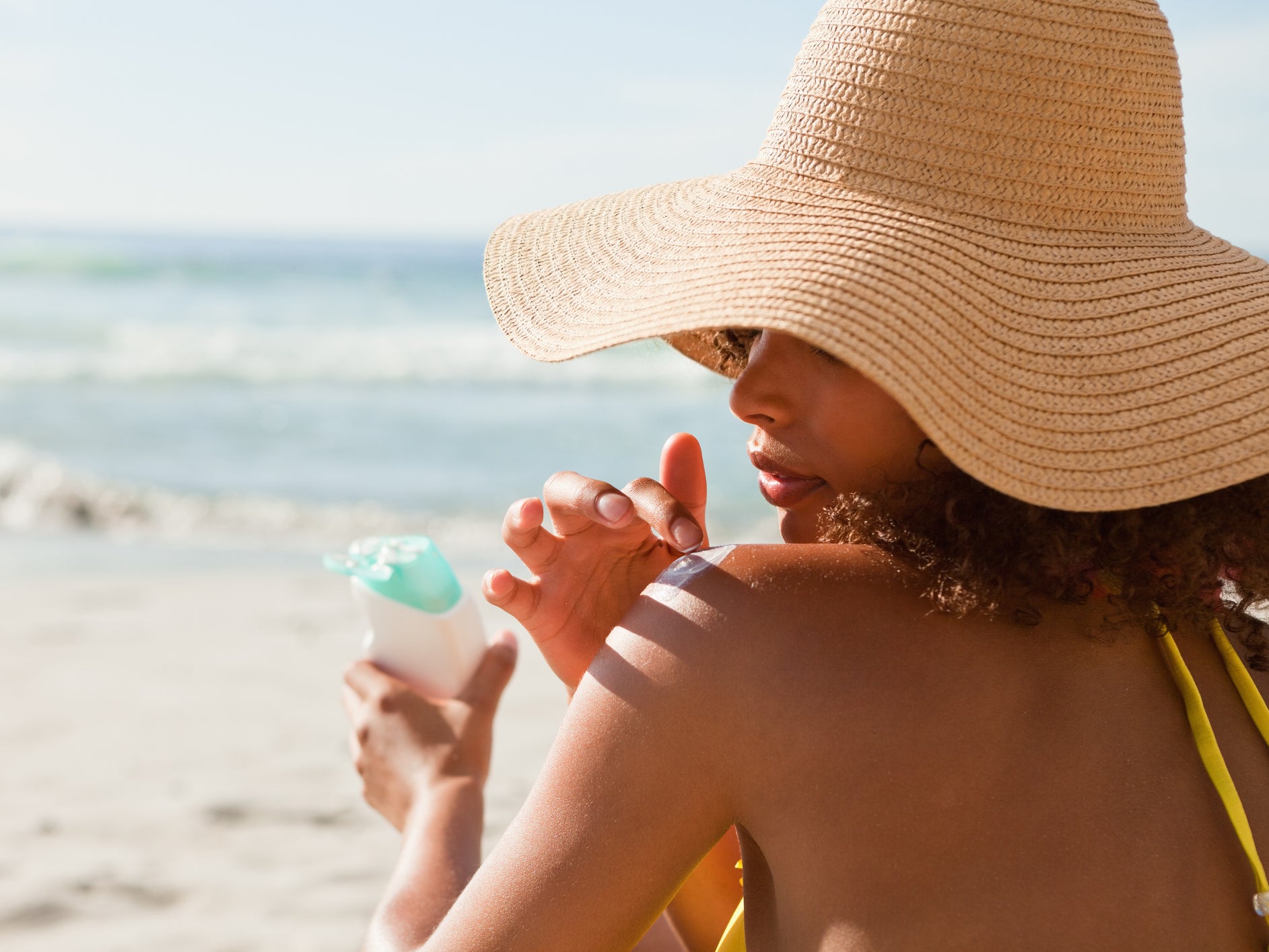This website uses cookies so that we can provide you with the best user experience possible. Cookie information is stored in your browser and performs functions such as recognising you when you return to our website and helping our team to understand which sections of the website you find most interesting and useful.

It has been reported that temperatures could exceed 30C in the UK this week, as the nation braces for a heatwave.
With that in mind, slathering on sunscreen is necessary to keep your skin safe from damage.
But with different brands, SPFs, formulas, and methods of applying, it can be difficult to decipher just how much sunscreen you need to keep protected in the summer rays.
Fortunately, most dermatologists recommend a few main sunscreen application tips to keep your skin happy and safely out of the lobster-red zone.
According to the American Academy of Dermatology (AAD), the first thing you need to know is how much sunscreen you need to apply.
Although most people are aware that sunscreen needs to be reapplied, knowing how much to use is an integral part of the equation – especially because the application process varies when it comes to different formulas.
Created with Sketch.
Created with Sketch.
1/21 Maternity Animal Print Swimsuit, £28, Topshop
2/21 Bikini Top, £12.99 and V-Shaped Bikini Bottoms, £9.99, H&M
3/21 Deep Back Swimsuit, £25, Monki
4/21 Latitude Swim Top, £12 and High Waist Swim Bottoms, £10, Weekday
5/21 Gingham Cutout Halter Swimsuit, £55, & Other Stories
6/21 Sheared Bandeau Swimsuit, £38, Warehouse
7/21 Red Spot Belted Swimsuit, £25.99, New Look
8/21 Asymmetric Bikini Top, £17.99 and Bikini Bottoms with Ruffle Trim, £15.99, Zara
9/21 Tort One Shoulder Swimsuit, £75, Whistles
10/21 Black Bikini Set by We Are We Wear, £76, Topshop
11/21 Tiger Print String Swimsuit, £120, Ganni
12/21 Capri Bikini Top, £30 and Bottoms, £28, Boden
13/21 Active Printed Zip-Up Longer Length Swimsuit, £20, Marks & Spencer
14/21 Bikini Top, £25 and Bikini Bottom, £17, Arket
15/21 V-Neck Swimsuit with Belt, £29.99, H&M
16/21 Printed Swimsuit with Bow, £19.99, Zara
17/21 Square neck Tie Dye Swimsuit, £35, & Other Stories
18/21 Giraffe Print Ribbed Bikini Set, £30, Topshop
19/21 Black Spot Scoop Back Swimsuit, £16.99, New Look
20/21 Twisted-back Swimsuit, £45, Cos
21/21 Bora Bora Underwired Bandeau Top C-G Cup, £36 and High Waist Tummy Control Bikini Brief, £18, Figleaves
1/21 Maternity Animal Print Swimsuit, £28, Topshop
2/21 Bikini Top, £12.99 and V-Shaped Bikini Bottoms, £9.99, H&M
3/21 Deep Back Swimsuit, £25, Monki
4/21 Latitude Swim Top, £12 and High Waist Swim Bottoms, £10, Weekday
5/21 Gingham Cutout Halter Swimsuit, £55, & Other Stories
6/21 Sheared Bandeau Swimsuit, £38, Warehouse
7/21 Red Spot Belted Swimsuit, £25.99, New Look
8/21 Asymmetric Bikini Top, £17.99 and Bikini Bottoms with Ruffle Trim, £15.99, Zara
9/21 Tort One Shoulder Swimsuit, £75, Whistles
10/21 Black Bikini Set by We Are We Wear, £76, Topshop
11/21 Tiger Print String Swimsuit, £120, Ganni
12/21 Capri Bikini Top, £30 and Bottoms, £28, Boden
13/21 Active Printed Zip-Up Longer Length Swimsuit, £20, Marks & Spencer
14/21 Bikini Top, £25 and Bikini Bottom, £17, Arket
15/21 V-Neck Swimsuit with Belt, £29.99, H&M
16/21 Printed Swimsuit with Bow, £19.99, Zara
17/21 Square neck Tie Dye Swimsuit, £35, & Other Stories
18/21 Giraffe Print Ribbed Bikini Set, £30, Topshop
19/21 Black Spot Scoop Back Swimsuit, £16.99, New Look
20/21 Twisted-back Swimsuit, £45, Cos
21/21 Bora Bora Underwired Bandeau Top C-G Cup, £36 and High Waist Tummy Control Bikini Brief, £18, Figleaves
As a general rule for lotions and creams, the AAD recommends following the guideline of one ounce, or enough sunscreen to fill a shot glass, and then adjusting from there depending on your body size.
It may seem like a lot, but a shot glass-full dollop of sunscreen is typically enough to cover the exposed areas of the body from head to toe.
Sunscreen sprays are often considered less of a hassle than lotions, but it also means you need to be especially careful when applying in order to get the full SPF amount – and to keep from missing a spot on your body.
The necessary amount of coverage requires at least six seconds of spraying in each spot – roughly four seconds more than most people use.
Those opting for spray sunscreen should also rub the formula into the skin after spraying, especially if you are already outdoors, as the method can result in uneven coverage and unprotected skin, according to the AAD.
With sticks, often used for facial coverage, applying generously all over the face at least twice is recommended – and remembering your ears and eyelids is key.
As for the SPF and traits to look for in a sunscreen, the AAD recommends choosing a sunscreen that is at least 30 SPF or higher and offers broad-spectrum protection against both UVA and UVB rays.
Water resistance is also an important factor if you are planning on swimming.
And before you head outside, make sure your sunscreen hasn't expired – most formulas last about two years before they need to be replaced.



 Africana55 Radio
Africana55 Radio 

